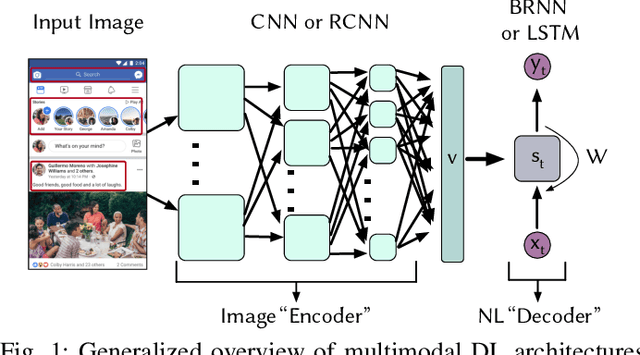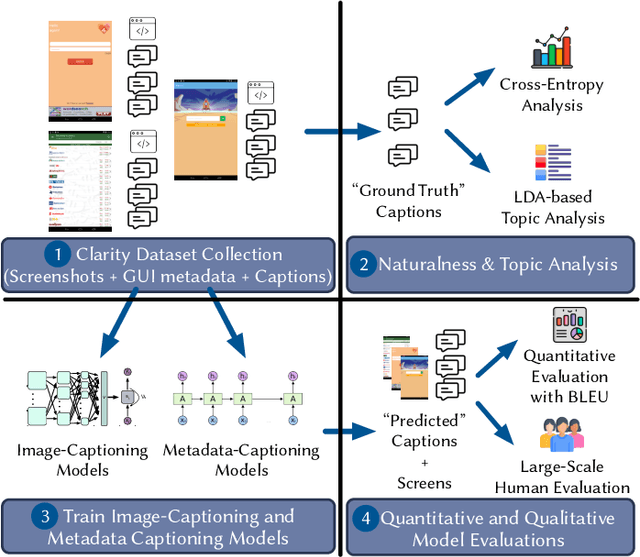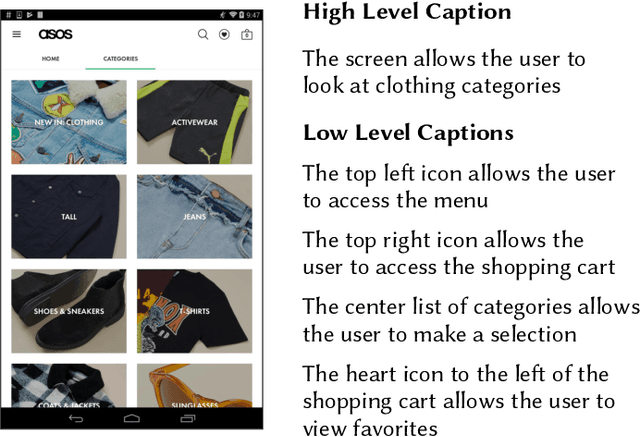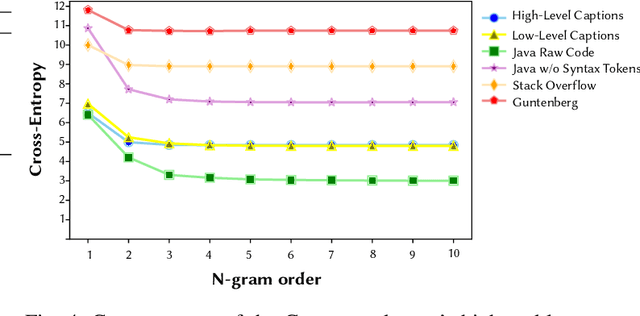An Empirical Investigation into the Use of Image Captioning for Automated Software Documentation
Paper and Code
Jan 03, 2023



Existing automated techniques for software documentation typically attempt to reason between two main sources of information: code and natural language. However, this reasoning process is often complicated by the lexical gap between more abstract natural language and more structured programming languages. One potential bridge for this gap is the Graphical User Interface (GUI), as GUIs inherently encode salient information about underlying program functionality into rich, pixel-based data representations. This paper offers one of the first comprehensive empirical investigations into the connection between GUIs and functional, natural language descriptions of software. First, we collect, analyze, and open source a large dataset of functional GUI descriptions consisting of 45,998 descriptions for 10,204 screenshots from popular Android applications. The descriptions were obtained from human labelers and underwent several quality control mechanisms. To gain insight into the representational potential of GUIs, we investigate the ability of four Neural Image Captioning models to predict natural language descriptions of varying granularity when provided a screenshot as input. We evaluate these models quantitatively, using common machine translation metrics, and qualitatively through a large-scale user study. Finally, we offer learned lessons and a discussion of the potential shown by multimodal models to enhance future techniques for automated software documentation.
 Add to Chrome
Add to Chrome Add to Firefox
Add to Firefox Add to Edge
Add to Edge